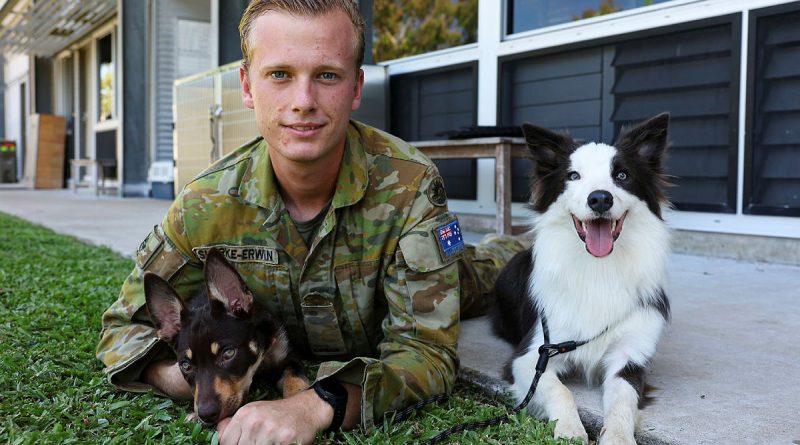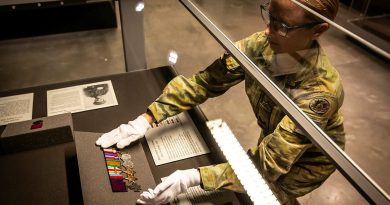Following in uncle’s paw prints

Twelve-week-old Joey is a high-energy and inquisitive kelpie pup, but 3 Combat Engineer Regiment’s newest recruit has some big paws to fill.
CAPTION: Army Sapper Flynn Skerke-Erwin, of the 3rd Combat Engineer Regiment, with trainee explosive detection dogs Joey, left, and Ash. Story and photo by Warrant Officer Class 2 Max Bree.
Joey’s uncle, Archie, is a successful explosive detection dog, and handlers at the regiment’s explosive detection dog section are hoping to continue that success.
It all starts by socialising Joey with new people and dogs, along with training to develop his hunt drive.
He was exposed to everything from helicopters, gunfire and wildlife to different people and vehicles, to get him used to the varied environments he’ll operate in.
Handler Sapper Glenn Newman said this helps build a puppy’s confidence.
“We do environmental exposure before they get to a fear period, because everything in the beginning is neutral to them,” he said.
Puppies are trained in basic obedience that includes making sure they can be easily recalled when working off leash at distance from the handler.
They are also imprinted with their target odour, which the regiment does by exposing a puppy to the odour while they are eating.
The dog becomes conditioned to an odour they’ll eventually search for by associating it with a high value reward, like food, from a young age.
The section has a number of labradors supplied by Border Force, with others received from local rescue shelters and breeders, but they plan to keep bringing in one or two new puppies each year so handlers can raise the dog from a pup.
Joey follows border collie Ash, who arrived at the unit mid last year, and Archie, who was trained in 2018.
Sapper Newman said raising puppies would result in search dogs shaped to their capability needs.
“From day dot, we’ve built the hunt drive and imprinted odours to what we need,” he said.
“They understand what’s right and wrong, and we’ve raised them to love search.”
Each new puppy that comes in breathes life into the regiment’s dog section, according to Sapper Newman. This prompts sappers to learn training techniques to benefit their newest recruit.
“Morale comes up, people have to go out and find new information and processes, to help the puppy learn,” Sapper Newman said.
.
.

.
.





